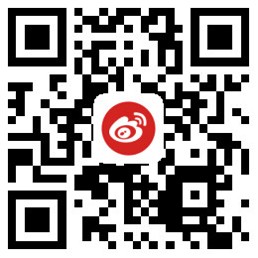(这个活动的题目和我刚交的跨学科研究作业一模一样,于是用DeepL翻译了一下混了一篇,比较抽象)
了解自己的学科是跨学科研究的基础。作为一名媒体与传播学的学生,我将在本文中简要介绍这门学科,并解释媒体是如何收集数据、分析数据和生产知识的。
虽然媒体与传播是一门相对较新的学科,但它与新闻业密切相关,而第一份 "报纸 "出现在凯撒大帝统治时期的罗马(Shaw,2021)。由于它与新闻业的关系,媒体与传播一般是一门研究与实践相结合的学科。本文将重点讨论媒体与传播的研究部分,旨在研究人与人之间沟通的方式、过程和结果。
研究的开始是收集现象的数据。由于媒体与传播旨在研究传播的本质,它所收集的数据是人们对事件的叙述和报道的属性。例如,如果有一个关于汽车事故的报道,首先要研究报道的结构,以明确这个报道的体裁。然后再考察语域,也就是文字的语气,以了解作者的态度。报道的出版商也很重要,它与语境有关:大报通常喜欢严肃、正式的语调,而小报则喜欢相反。最后,要研究照片,包括构图、颜色和面部表情。传播总是由人完成的,这意味着事实将不可避免地与观点相混合。媒体和传播的一个主要目标是将它们 "分开",找出文字、图像和符号背后的真实意图。因此,媒体与传播学借用了许多修辞学和符号学的概念,如体裁、语域、编码和解码。它不是一门严格的传统学科。
下一步是分析从传播材料中收集的数据。这一步涉及将范式和理论模型应用于研究。如果把媒体和传播放到合法化代码理论的专业化平面(Legitimation Code Theory)中,它很可能停留在平面的左下角区域,也就是相对主义代码。该理论中的相对主义代码指的是 "一切皆可 "时的代码(Krieken,2016),合法的洞察力既不需要专业知识,也不需要特定的处置。这意味着多种范式和模式可以同时被接受,而媒体和传播对不同的理论具有高度的容忍性。仅仅在公共关系专业,也就是媒体与传播下的一个子专业,就有五个不同的公共关系范式。由于传播的主观性,案例总是在不断变化,很多解释看似合理,但有些解释却无法解释新的情况。因此,媒体和传播学者通常以批判的方式进行思考,并试图将现象总结为理论。
例如,James W. Carey在他的书中提出,传播有两种观点:传播观和仪式观(Carey, 2009)。传递观(Transmission view)认为沟通是传递信息,而仪式观(Ritual view)认为沟通是情感分享和体验的过程。作者用 "电报 "来解释传播观,用 "戏剧 "和 "仪式 "来解释仪式观。之后,他声称传播的仪式观通过强调人与人之间的纽带而更适合人类,并批评传播观在该领域占据了太长时间,已经停止发展。在许多媒体与传播的文章中,作者将试图用大多数段落来证明他相对较新的观点,而另一个较老的观点将被批评以支持他的主要论点。这门学科没有统一的理论,一个强有力的、合理的论点总是会被接受,直到针对该论点的新的批评意见被确立。
媒体与传播产生的知识是关于传播的事实。这些事实可能是关于某些传播模式的客观性、效率和道德的。它们是经过案例和证据证明的观点,在当前的环境中是站得住脚的。例如,我的一篇传媒论文比较了对同一事件的两篇新闻报道,发现了其中的异同,并证明新闻业没有绝对的客观性,只有相对的客观性。媒介与传播产生了这些被证明的观点,并帮助人们区分事实和观点,建立了一个健康、有效的沟通。
通过www.DeepL.com/Translator(免费版)翻译
原文:
Understanding one’s own disciplinary is the base of interdisciplinary study. As a Media and Communications student, I will briefly introduce this discipline in this article, and explain how Media collects data, analyzes data, and produces the knowledge.
Although Media and Communications is a relatively new discipline, it is closely connected to journalism, while the first ‘newspaper’ appeared in Rome during the ruling of Julius Caesar (Shaw, 2021). Due to its relationship with journalism, Media and Communications is generally a discipline combining research and practice. This article will focus on the research part of Media and Communications, which aims to study the approach, process, and result of communication between people.
The start of research is collecting data from phenomenon. Since Media and Communications aims to study the nature of communication, the data it collects are the properties of people’s accounts and coverages of events. For example, if there is a coverage on a car accident, the structure of the coverage will be examined first to clarify the genre of this coverage. The register, which is the tone of the words, will then be examined to know the attitude of the author. The publisher of the coverage is also important, and it is related to the register: a broadsheet newspaper usually prefers a serious, formal tone, while a tabloid newspaper prefers the opposite. Finally, the photo will be studied, including the composition, color and facial expressions. Communication is always completed by people, which means that facts will inevitably mix with opinions. One major goal of Media and Communications is to ‘separate’ them and find out the true intention behind the words, images and symbols. Therefore, many Rhetoric and Semiotic concepts were borrowed by Media and Communication, such as genre, register, coding and decoding. It is not a strict traditional discipline.
The next step is analyzing the data collected from the communication materials. This step involves applying paradigms and theoretical models to the research. If Media and Communications is put into the Specialization Plane from the Legitimation Code Theory, it is likely to stay in the lower-left area of the plane, which is the relativist code. Relativist code in the theory refers to a code when ‘everything goes’ (Krieken, 2016), and legitimate insights need neither specialist knowledge nor specific dispositions. This means that multiple paradigms and models can be accepted at the same time, while Media and Communications is highly tolerant to different theories: In Public Relations alone, which is a sub-major under Media and Communication, there are five different paradigms in Public Relations. Due to the subjective nature of communication, cases are always changing, and many explanations seem to be reasonable, but some of them could not explain new situations. Therefore, Media and Communication scholars usually think in a critical way and try to conclude phenomenon into theory.
For example, James W. Carey proposed that communication had two views: transmission view and the ritual view in his book (Carey, 2009). Transmission view thinks communication is transmitting messages, while ritual view thinks that communication is emotional sharing and experiencing process. The author used the ‘telegraph’ to explain the transmission view and used the ‘drama’ and ‘ceremony’ to explain the ritual view. After then, he claimed that ritual view of communication is more suitable to human by emphasizing the bonds between human and criticized that transmission view had dominated the field for too long and had stopped developing. In many Media and Communications essay, the author will try to prove his relatively new viewpoint using most paragraphs, while another older viewpoint will be criticized to support his main argument. There is no unitary theory in this discipline, and a strong and reasonable argument will always be accepted until new criticisms against the argument are established.
The knowledge produced by Media and Communications is facts about communication. These facts could be about the objectivity, efficiency, and ethics of certain mode of communications. They are the viewpoints which have been proved with cases and evidence, and they are tenable in current environment. As an example, one of my Media and Communications essay compared two news coverages on the same event, finding similarities and differences, and proved that there was no absolute objectivity in journalism but only relative one. Media and Communications produces these proved viewpoints and helps people tell facts from opinions, establishing a healthy, effective communication.
Reference
Carey, J. W. (2009)kaiyun体育. A Cultural Approach to Communication. In J. W. Carey, Communication as culture essays on media and society (pp. 1-28). New York: Routledge.
Krieken, R. v. (2016). Future Trends: The Rise of Knowledge. In R. v. Krieken, Sociology (pp. 174-179). Melbourne: P.Ed Australia.
Shaw, M. J. (2021). Origins. In M. J. Shaw, An Inky Business: A History of Newspapers from the English Civil Wars to the American Civil War (pp. 20-51). London: Reaktion Books, Limited.


